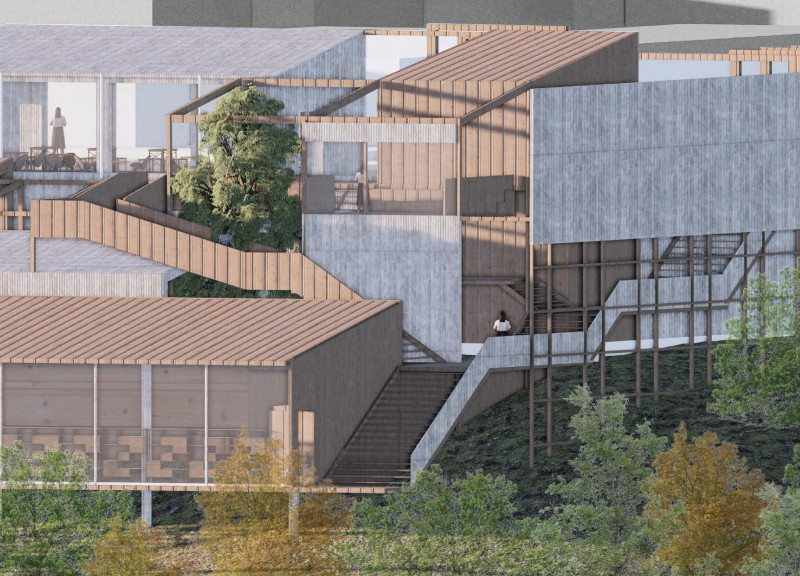5 key facts about this project
The primary function of the project is to serve as a dynamic space that accommodates both public and private activities, seamlessly integrating the needs of its users. At the core of the design is an emphasis on accessibility and community engagement. This is evidenced by the inclusive layouts and the provision of communal areas that encourage interaction and collaboration. The architecture does not merely occupy space; it shapes experiences and fosters relationships among its inhabitants.
A distinctive feature of this project is its materiality. The selection of materials plays a crucial role in articulating the design's ethos. Materials such as reinforced concrete, glass, wood, and metal are thoughtfully employed to reflect the local context while ensuring durability and sustainability. The use of glass, for instance, creates transparency and connects the interior spaces with the exterior environment, allowing natural light to permeate deeper within the structure. Wood elements add warmth and texture, softening the overall appearance of the architecture and enhancing user comfort.
Unique design approaches are evident throughout the project. The layout is meticulously planned to maximize views while minimizing any potential visual obstruction. This is achieved through strategic positioning of windows and openings that frame picturesque vistas and invite the landscape into the interiors. The roof design, perhaps sloped or undulating, not only contributes to the aesthetic quality of the structure but also functions effectively for rainwater collection or solar gain, showcasing a commitment to sustainable design practices.
Landscaping is integrated into the architectural design, extending the living space beyond the confines of the building. Outdoor areas are designed as extensions of the interior, featuring terraces, gardens, or green roofs that enhance biodiversity while providing opportunities for relaxation and leisure. These elements reinforce a gentle transition from the constructed environment to nature, encouraging occupants to engage with the outdoors.
Attention to sustainability is a hallmark of the project. Through the inclusion of energy-efficient systems, water management strategies, and the use of environmentally friendly materials, the design promotes stewardship of resources. The architecture actively participates in reducing its carbon footprint while serving the community effectively.
Furthermore, the layout encompasses strategic zoning of spaces, differentiating between areas for work, leisure, and social interaction. This thoughtful segmentation allows for fluid movement and interaction while maintaining privacy where needed. The ability to adapt spaces for various functions over time underscores the versatility of the design, ensuring it remains relevant and useful for future generations.
Aspects such as architectural plans, architectural sections, and architectural designs reflect careful consideration during the development process. Together, they present a cohesive narrative that maps out the intentions of the architects and the desired outcomes for the project. Each detail, from the selection of entrance materials to the intricacies of interior finishes, is aimed at creating a seamless user experience.
For a deeper understanding of the design's objectives and implications, readers are encouraged to explore the project presentation further. Delving into the architectural plans and sections will provide valuable insights into the methodology employed and showcase the thoughtful decisions made throughout the design process. This project stands as an example of how architecture can thoughtfully engage its setting while serving the community’s needs.


 Yuzhe Yang
Yuzhe Yang 




















